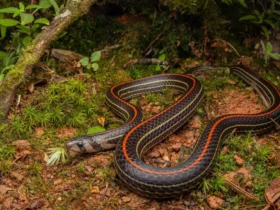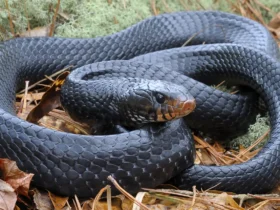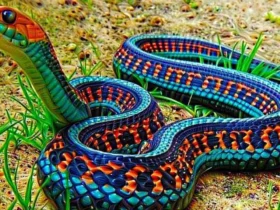In the cool and diverse habitats of North America, a captivating serpent emerges with its unique blue coloration—the Blue Garter Snake (Thamnophis sirtalis). With its vibrant blue scales, slender form, and intriguing behavior, this non-venomous snake catches the attention of herpetologists and reptile enthusiasts. Join us as we delve into the fascinating world of the Blue Garter Snake, uncovering its appearance, behavior, habitat, and its significance in the ecosystems it inhabits.

Appearance and Coloration
The Blue Garter Snake is characterized by its striking blue coloration, which sets it apart from other garter snake subspecies. The shade of blue can range from a pale sky blue to a deeper turquoise or even a bluish-green. Its scales possess a smooth and glossy texture, further enhancing its vibrant appearance. Along the length of its body, the Blue Garter Snake features distinctive dark stripes, providing contrast against its bright blue hues.

Behavior and Adaptations
Blue Garter Snakes are primarily terrestrial and are well adapted to a range of habitats, including grasslands, meadows, wetlands, and forest edges. They are known for their agility and excellent swimming abilities, making them equally at home on land and in water. These snakes are non-venomous, using their keen senses to locate prey, which primarily consists of small vertebrates, insects, and amphibians. Like other garter snake species, they may release a foul-smelling musk when threatened to deter predators.
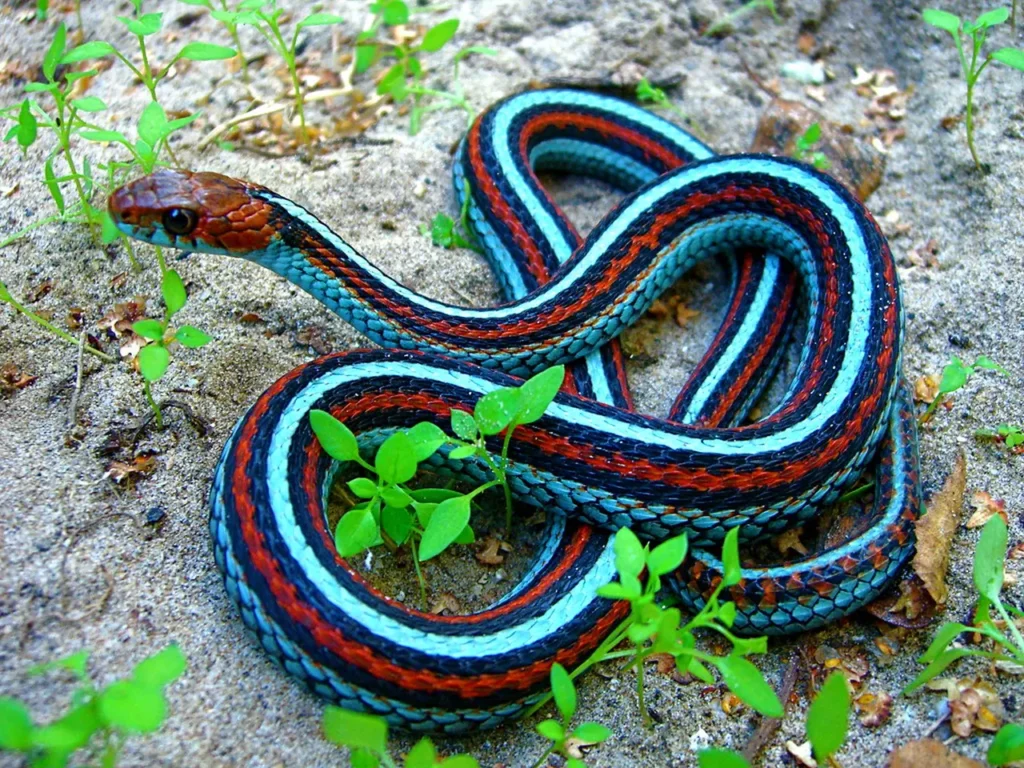
Habitat and Distribution
Blue Garter Snakes are native to various regions in North America, including parts of the United States and Canada. They can be found in habitats stretching from the western regions of the United States, such as California, Oregon, and Washington, to the central provinces of Canada, including British Columbia and Alberta. They inhabit a diverse range of environments, such as grasslands, woodlands, and even urban areas with suitable vegetation and water sources.
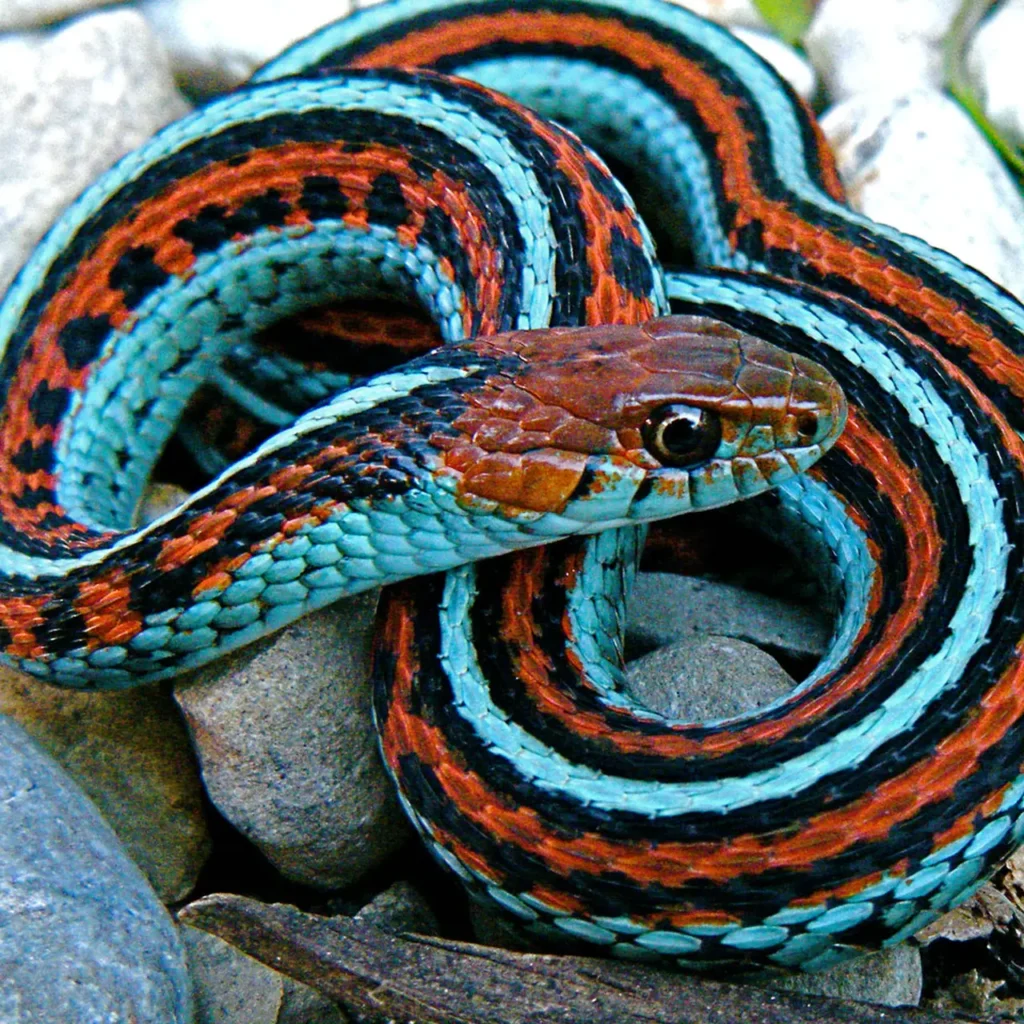
Conservation and Threats
The Blue Garter Snake is not currently considered a threatened species. However, like many wildlife species, it faces challenges due to habitat loss and fragmentation caused by urbanization, agriculture, and human activities. Additionally, accidental encounters with vehicles on roads can pose a risk to their populations. Conservation efforts, including the protection and restoration of their natural habitats, are vital for maintaining healthy populations and ensuring their long-term survival.
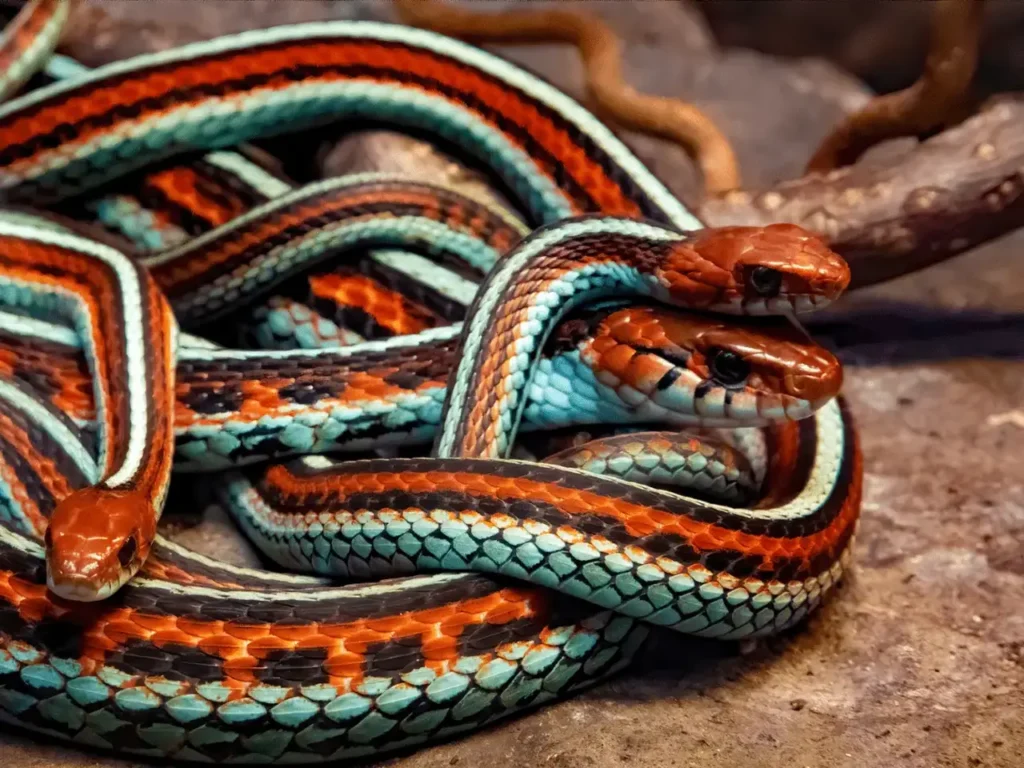
Ecological Significance
As a predator, the Blue Garter Snake plays a valuable role in controlling populations of small vertebrates, insects, and amphibians, thus contributing to the balance of its ecosystem. By regulating prey populations, these snakes help maintain the overall health and biodiversity of the habitats they inhabit.
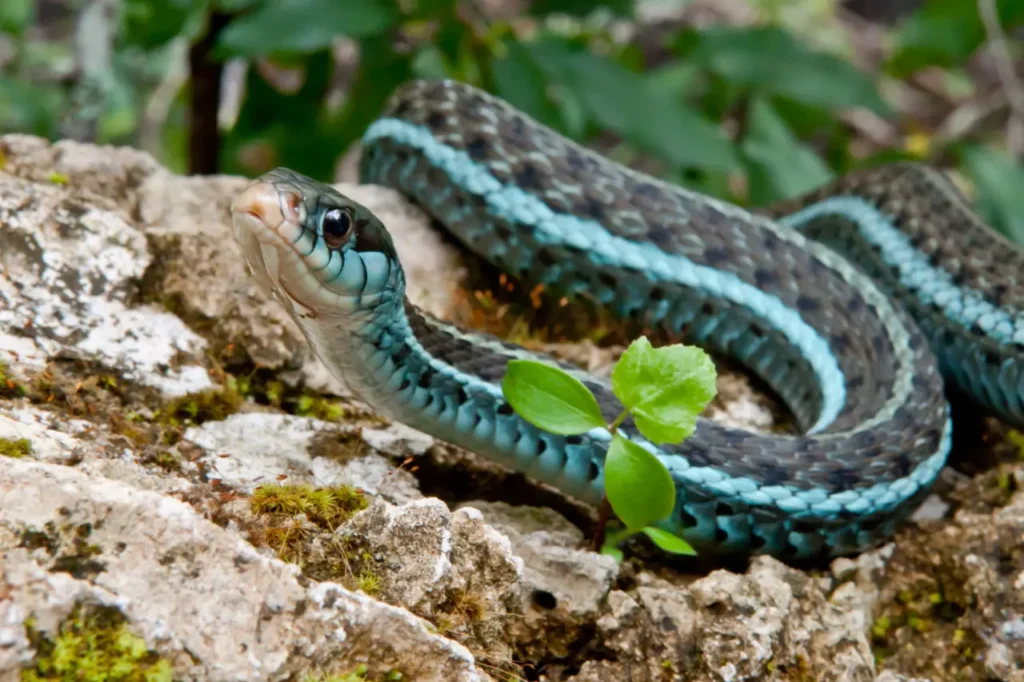
Appreciating the Blue Beauty
The Blue Garter Snake’s distinctive coloration and adaptability to diverse environments make it a fascinating species to observe and appreciate. Its presence in North American ecosystems adds to the tapestry of biodiversity and highlights the wonders of the natural world.
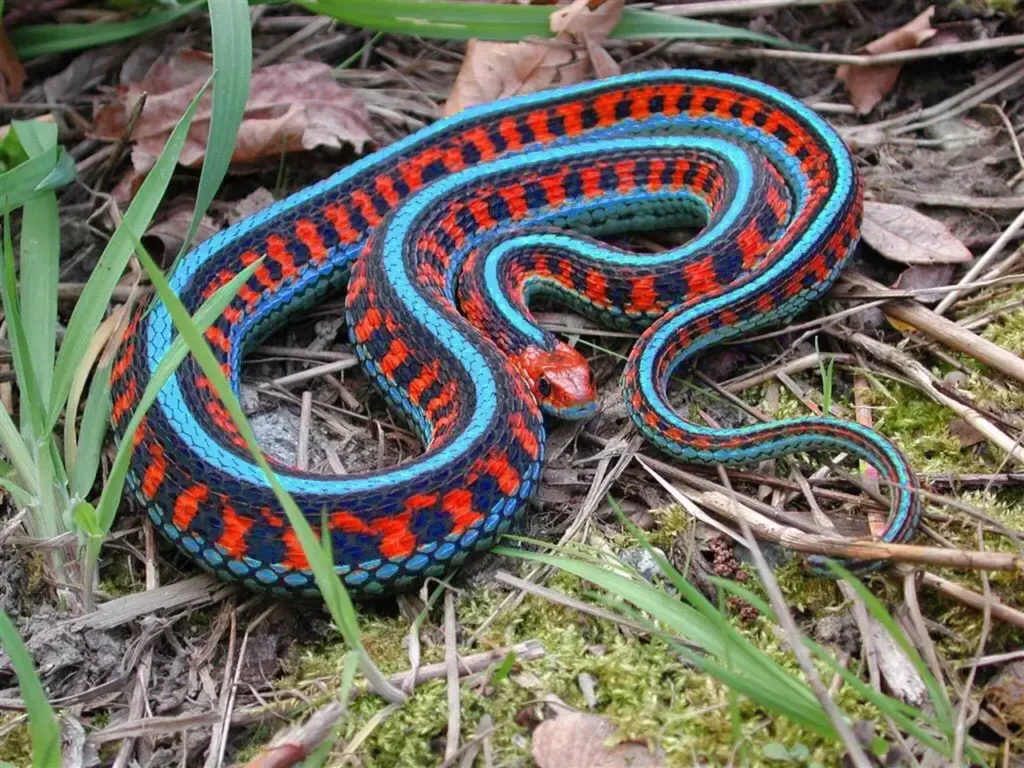
The Blue Garter Snake, with its vibrant blue hues and adaptability to various habitats, symbolizes the beauty and diversity of the serpent world. Its presence in North America’s landscapes reminds us of the intricate balance and interconnectedness of ecosystems.
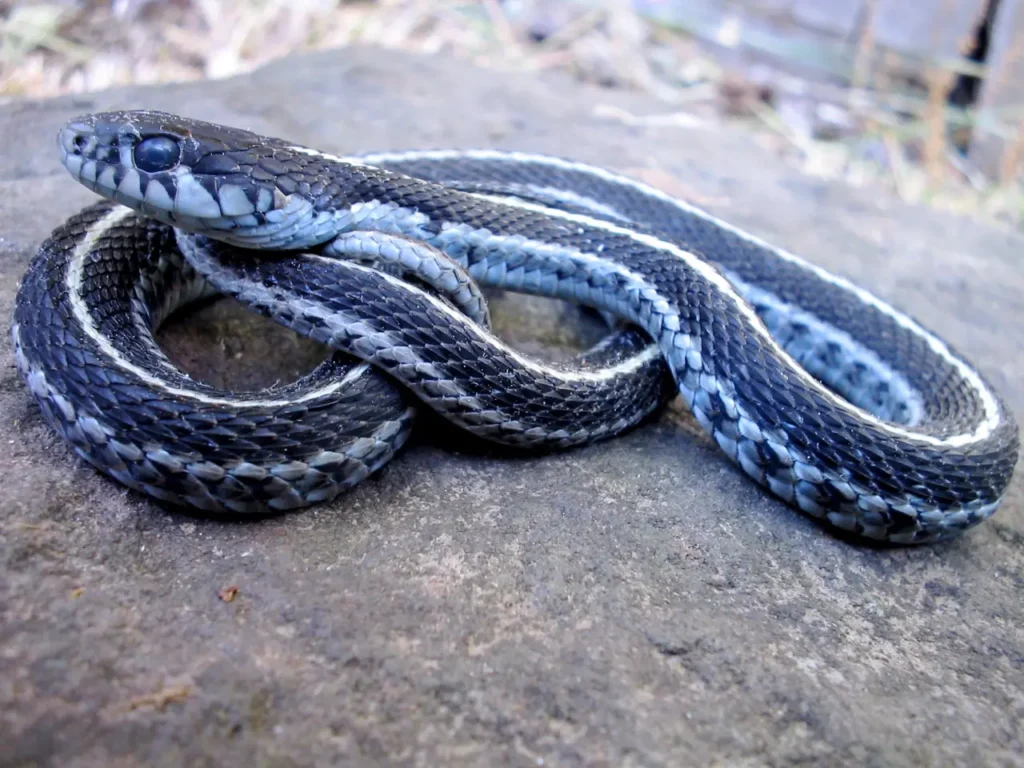
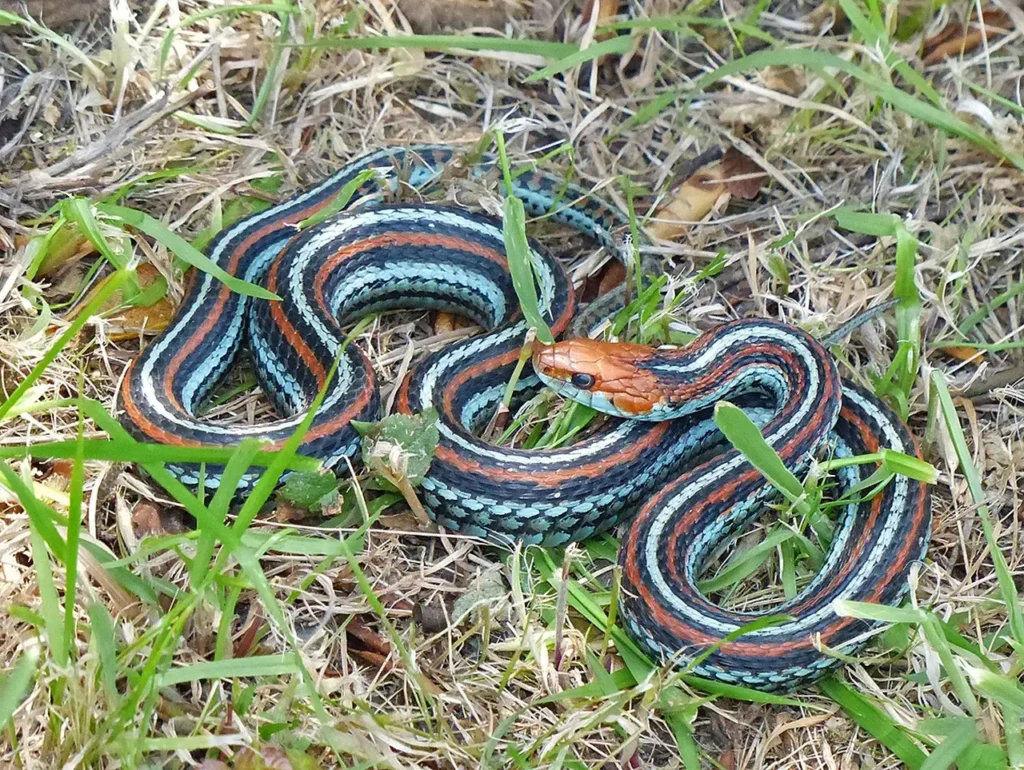
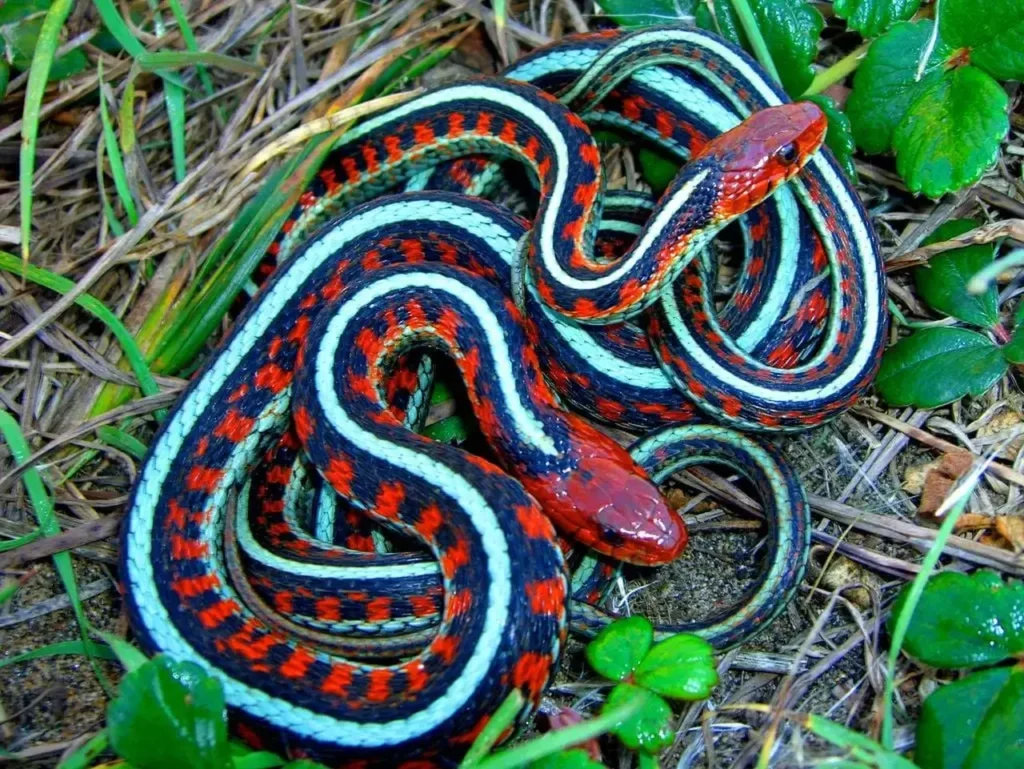
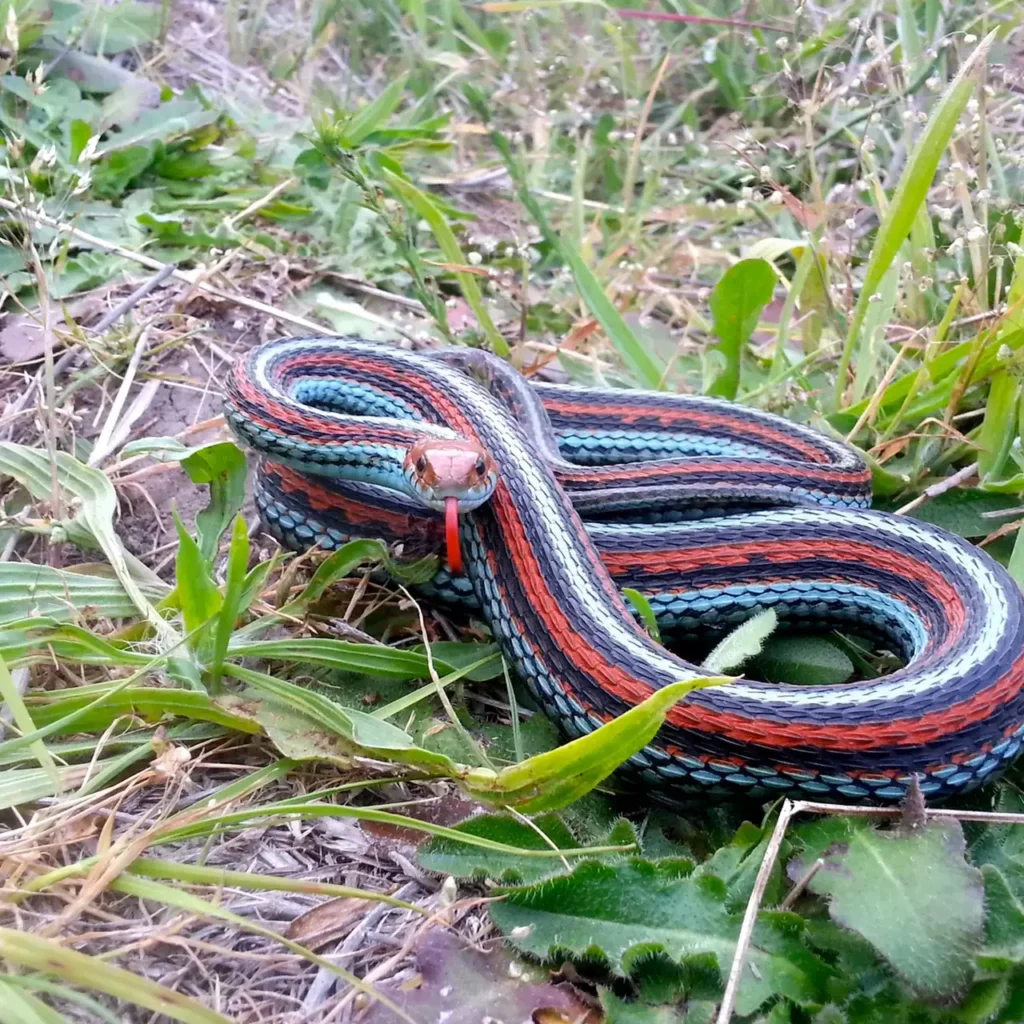
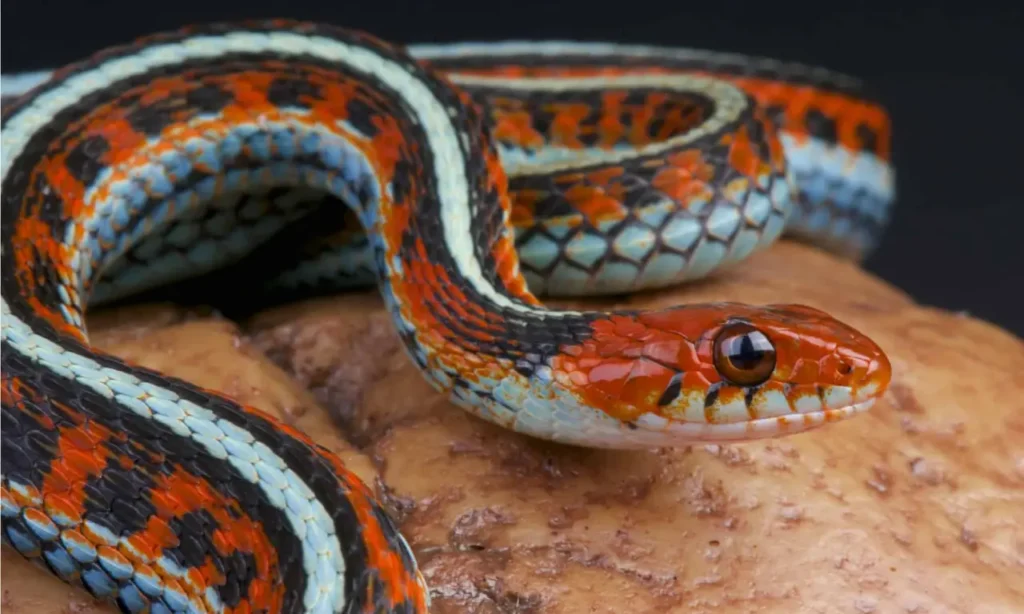
By valuing and preserving their natural habitats, supporting conservation initiatives, and promoting awareness about the importance of biodiversity, we can ensure the continued existence of the Blue Garter Snake and safeguard the delicate ecosystems it inhabits. Let us celebrate the captivating beauty and ecological significance of the Blue Garter Snake and strive to protect and conserve its habitats for generations to come.
